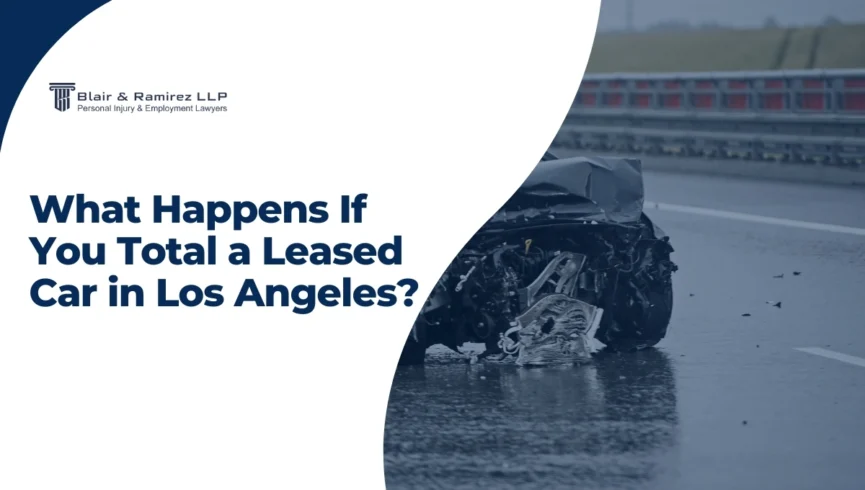Totalling a leased car in Los Angeles doesn’t have to derail your financial stability, especially when you understand your rights, coverage options, and next steps. The resolution of your situation depends on your lease agreement, your insurance policy, and California’s at-fault laws. While the leasing company typically still requires full payment of the remaining lease balance, even if the car is no longer drivable, there are ways to minimize or eliminate out-of-pocket costs.
If your vehicle is declared a total loss by your insurer or the at-fault driver’s insurance, you may owe the difference between the insurance payout and what’s left on your lease. Fortunately, many drivers are protected by GAP insurance, which is specifically designed to cover that difference.
Below, we’ll guide you through what to expect and how to safeguard your credit, finances, and peace of mind after a leased car is totaled in California.
What Happens If You Total a Leased Car in Los Angeles?
- The leasing company still requires full payment of the remaining lease balance or actual cash value (ACV), whichever is greater.
- Your insurance company pays the ACV, not the full lease payoff – this may leave a gap.
- GAP insurance covers the difference between your insurance payout and the remaining lease balance, if you have it.
- You must report the accident to both your insurer and the leasing company, usually within 24–48 hours.
- If you're at fault and uninsured, you’re personally liable for the full lease payoff and damages.
- The accident could affect your credit report, leasing history, and ability to lease again.
- Delays in insurer payouts can result in late lease fees, unless negotiated or covered by insurance.
What Are the Legal and Financial Consequences of Totalling a Leased Car?
Totaling a leased car in Los Angeles brings immediate legal and financial obligations. Even though you don’t own the vehicle, you’re still contractually obligated to the leasing company. That financial responsibility doesn’t disappear just because the car is gone.
Legal and Financial Consequences:
- You still owe the lease balance. If the insurer’s payout is less than what you owe, you're on the hook unless you have GAP insurance.
- GAP insurance fills the payout gap. Without GAP coverage, you're legally responsible for the remaining lease balance after the insurance company pays the actual cash value (ACV).
- The leasing company must be notified quickly. If not, you could violate your contract and face legal penalties.
- You may owe fees. Late lease payments, towing costs, DMV title changes, and excess mileage fees may still be applicable even after a total loss.
- You may need legal help. If you are uninsured or the insurer delays payout, you may need to consult an auto accident attorney to protect your financial interests.
Missing a single clause in your lease or insurance policy can result in thousands of dollars in costs. Always read both documents carefully or consult an experienced Los Angeles car accident attorney if you’re unsure.
How Is a Leased Car Declared a Total Loss in California?
In California, a leased vehicle is declared a total loss when repair costs exceed a set percentage of the vehicle’s market value. However, the exact decision depends on multiple entities, including your insurer, the leasing company, and, in some cases, the DMV.
A total loss is not simply about damage; it’s about economics. If restoring the vehicle costs too much compared to its value, insurers will issue a total loss notice. But California law and your leasing agreement also influence this decision.
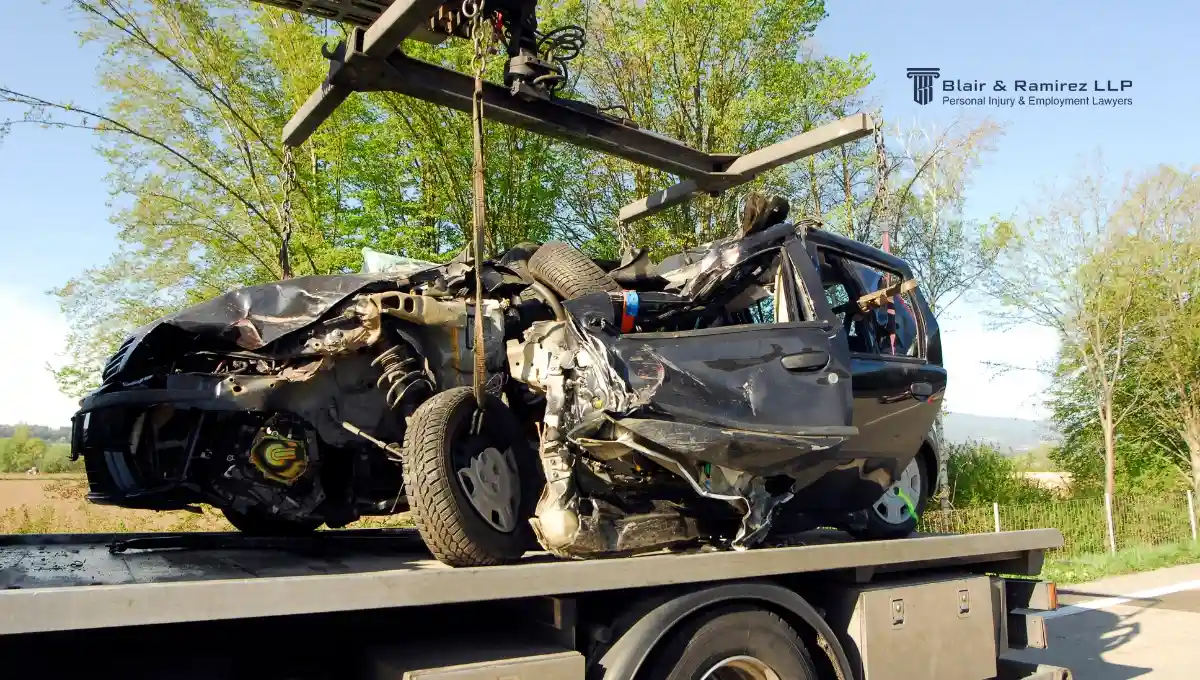
What Criteria Do Insurers Use to Total a Leased Vehicle?
Insurers in California use a Total Loss Formula (TLF) to determine whether a leased car is totaled. Common criteria include:
- Repair Costs vs. Actual Cash Value (ACV): If repairs cost 65-75% or more of the ACV, the car is usually totaled.
- Market Value: The ACV is based on mileage, age, condition, and comparable vehicle sales, not what you paid or owe.
- Salvage Value: If the salvage value is low, insurers are more likely to declare the car a total loss.
- Lease Clauses: Some leasing contracts allow the lessor to reject repair if the car suffers frame or airbag damage.
Example: Your leased car has an ACV of $28,000. If repairs exceed $19,600 (70%), your insurer may declare the vehicle a total loss, even if it still runs.
Who Has Legal Authority to Declare a Leased Car a Total Loss in California?
In most cases, your insurance company makes the official total loss determination.
However, several entities play a role:
- Insurer: Evaluates damage, applies California’s TLF, and makes the payout decision.
- Leasing Company: Must approve any repair exceeding a specified threshold; may require the car to be totaled due to frame or major damage.
- California DMV: If the car is branded as a salvage vehicle, DMV regulations apply under California Vehicle Code § 11515.
Bottom line: While insurers usually decide if the car is totaled, the DMV governs how it’s legally classified, and the leasing company has final say over what happens to the lease and the asset.
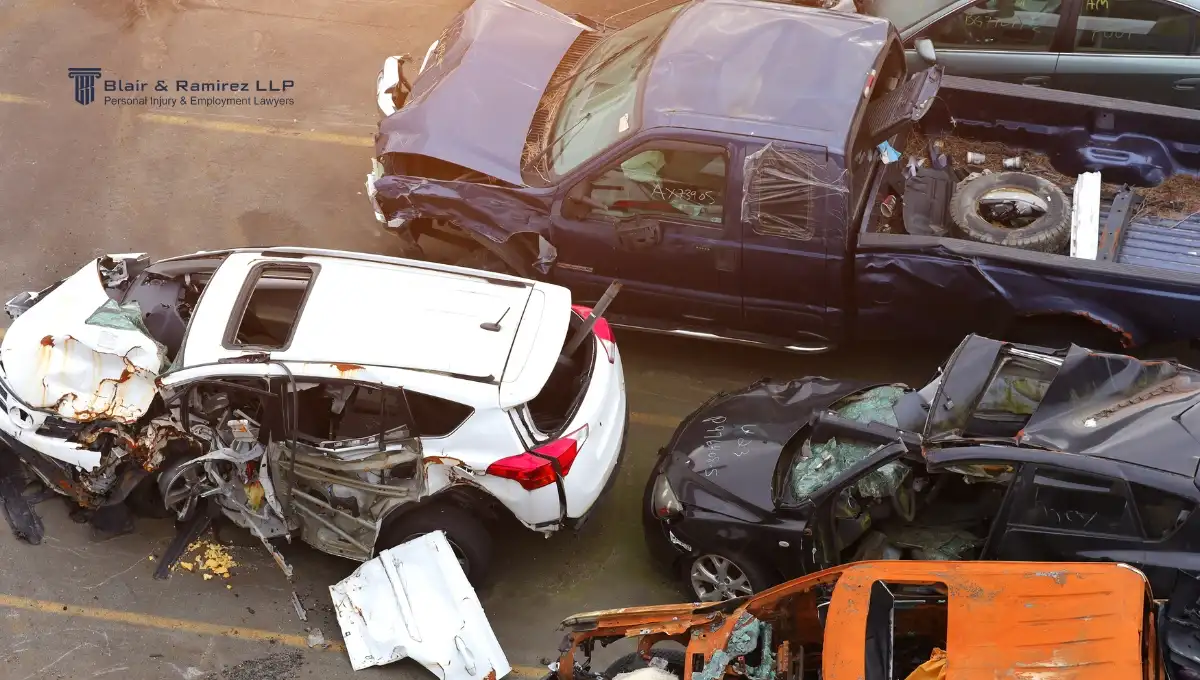
Who Pays for a Totaled Leased Car in California?
In California, who pays for a totaled leased car depends on your insurance, lease agreement, and whether you have GAP (Guaranteed Asset Protection) coverage. When a leased vehicle is declared a total loss, multiple parties may be involved in the payout, but the insurance company typically does not cover everything.
You may still owe money, even if the crash was not your fault.
This section breaks down what each party pays, and what happens if there’s a financial shortfall.
Does the Auto Insurer Pay Off the Lease After a Total Loss?
Yes, your insurer will pay the actual cash value (ACV) of the leased vehicle directly to the leasing company. However, they won’t pay more than the car’s estimated market value at the time of the crash.
Example: If your leased car is worth $22,000 and the remaining lease payoff is $25,000, your insurer will typically pay $22,000 to the leasing company, leaving a $3,000 gap.
This is where many lessees get blindsided, as they still owe the difference unless they have protection in place.
Who Pays the Remaining Lease Balance If Insurance Falls Short?
If insurance doesn’t cover the full lease payoff, you are still legally responsible for the remaining balance. This is true whether the crash was your fault or not.
If you don’t have GAP insurance and your car is totaled:
- You must pay the difference out of pocket.
- The leasing company can bill or sue for the shortfall.
- Your credit score could be affected if the balance goes unpaid.
If you do have GAP insurance, it may step in to cover the remaining balance after the insurer’s payment. But this only works if the policy is active and you meet all terms.
Does GAP Insurance Cover the Remaining Balance Owed to the Lessor?
Yes, if you have GAP insurance, it typically covers the difference between what your insurer pays and what you still owe on the lease. Here’s how the process usually works:
- You total your leased car.
- Your auto insurer pays the ACV of the vehicle to the leasing company.
- The leasing company applies that amount toward your lease balance.
- If there’s a shortfall, GAP insurance pays the rest.
- If you don’t have GAP insurance, that shortfall becomes your responsibility.
Important: GAP coverage is not automatic. Some leases include it, others do not. If you did not opt in or do not know, check your lease contract or call your lessor immediately.
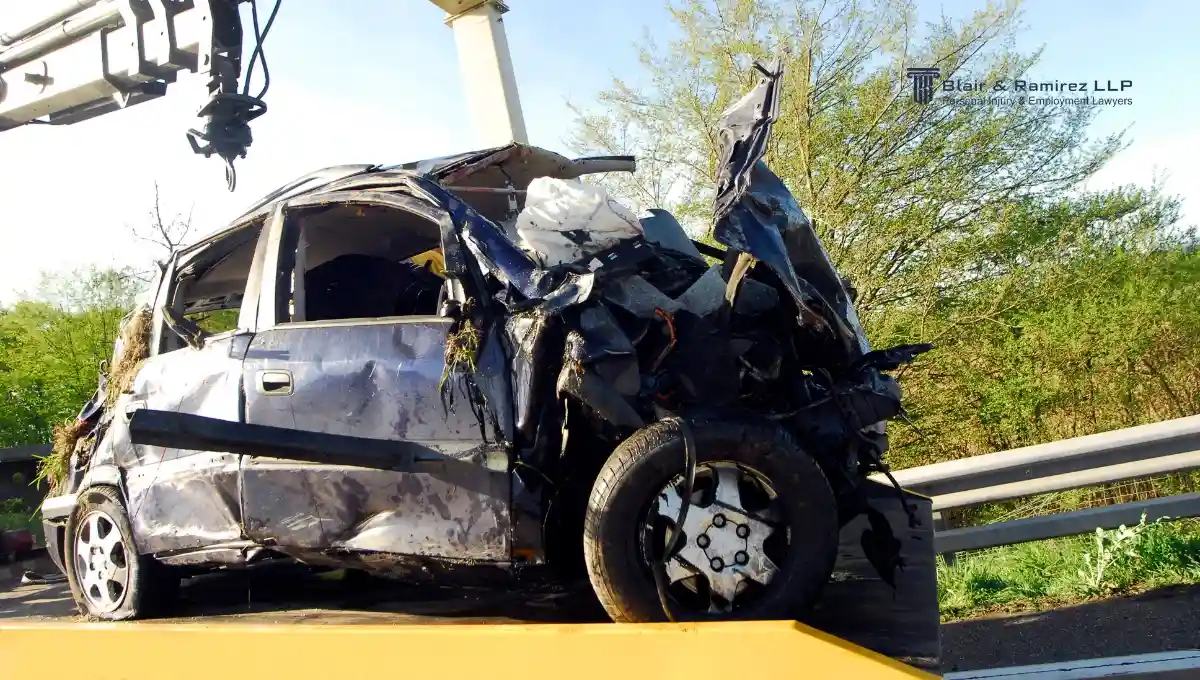
GAP Insurance Rules for Totaled Leased Cars in California
GAP insurance exists to protect you when your leased vehicle is totaled and the auto insurer’s payment does not cover the full lease payoff. In California, whether you are covered depends on your lease agreement, the vehicle’s value at the time of loss, and whether GAP coverage was included or purchased separately.
Why Does GAP Insurance Cover the Difference Between Actual Cash Value and Lease Payoff?
GAP insurance covers the difference between your car’s actual cash value and the remaining lease payoff because standard insurance only pays for what the car is worth at the time of the accident - not what you still owe on the lease.
Leased vehicles often depreciate faster than the lease balance decreases. So if your car is totaled, your insurance payout might not be enough to pay off the leasing company. GAP insurance fills that “gap,” protecting you from having to pay out of pocket for a car you no longer have.
Example:
- You total your leased car.
- The ACV (what the insurer pays) is $20,000.
- Your lease payoff is $26,000.
- GAP insurance covers the $6,000 difference, so you don't have to pay it yourself.
Without GAP, you'd be fully responsible for that $6,000.
What’s the Difference Between Dealer, Insurer, and Third-Party GAP?
GAP insurance can come from three sources, each with different rules, cancellation rights, and benefits:
| Source | Where You Get It | Key Notes |
|---|---|---|
| Dealer GAP | Usually part of the financing or lease agreement | Can be harder to cancel since it’s built into the contract |
| Insurer | Added through your car insurance provider | Often cheaper and easier to drop if you change policies |
| Third-Party GAP | Offered by lenders like credit unions | May come with better rates, but billed separately |
Liability Risks Without GAP Insurance in California
If you do not have GAP insurance and your insurer’s payout does not cover the full lease balance, you are personally responsible for the remaining amount. That shortfall doesn’t disappear and leasing companies may pursue payment aggressively.
Risks include:
- Owing thousands out of pocket after a crash.
- Getting sent to collections if you do not pay.
- Damage to your credit score.
- Legal action from the lessor.
If you are unsure whether you have GAP insurance, we recommend reviewing your lease agreement or insurance declarations page immediately or contacting our team at Blair & Ramirez LLP for guidance.
Do You Still Owe Lease Payments After Totalling a Car?
Yes, you still owe lease payments after a total loss, especially if your insurance payout does not fully cover the lease payoff. While insurance or GAP coverage may settle the majority of the lease balance, any gaps or delays in that process can leave you temporarily or permanently responsible for additional payments.
Understanding when payments stop and what fees can still apply helps you protect yourself from surprise costs.
When Do Lease Payments Stop After a Total Loss in California?
Lease payments typically stop once the leasing company receives full payment from the insurance provider or GAP insurer and officially closes the account. But that doesn’t happen instantly.
You may still be responsible for lease payments during the period:
- Before the car is declared a total loss.
- While the insurance claim is under review.
- If your insurance company delays payment.
- If there's no GAP insurance and a remaining balance exists.
If you stop making payments too early, it may result in late fees or damage to your credit. Always wait for written confirmation from the leasing company that your account has been satisfied.
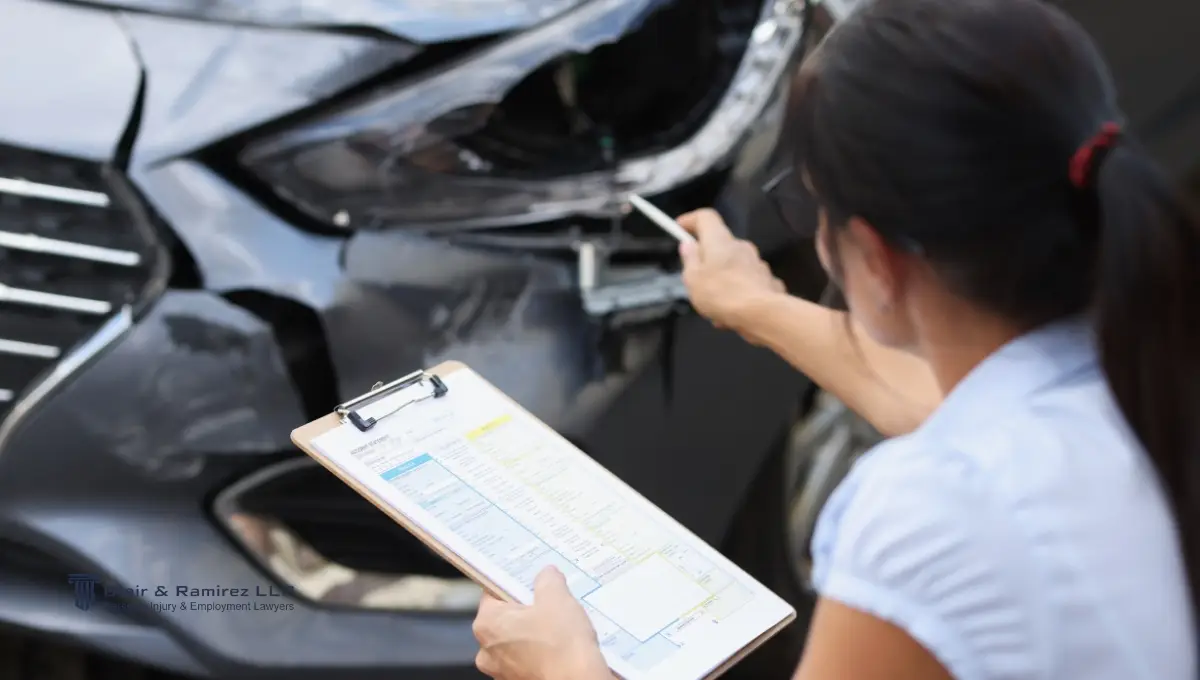
What Other Fees or Charges Can You Owe After the Lease Ends?
Even after a total loss, the leasing company may assess several additional charges. These fees vary by contract but often include:
- Early termination fee: Charged when the lease ends before the agreed term due to total loss.
- Excess mileage fees: Based on your usage before the accident, especially if you are over the contracted mileage.
- Wear and tear charges: If the vehicle had excessive damage before the crash.
- Administrative or processing fees: Related to total loss handling or early account closure.
- Unpaid lease payments: If insurance delays payout or if you failed to make payments during processing.
Important: These charges may still appear even when GAP insurance is in effect. Review your lease agreement or consult an attorney to clarify your rights and responsibilities.
How to File a Total Loss Claim on a Leased Car in California
If you total a leased car in California, filing your claim promptly is crucial. Time matters, not just for insurance deadlines, but for avoiding extra lease payments, late fees, or credit damage. Because the leasing company technically owns leased vehicles and both your auto insurer and the lessor must coordinate to process the total loss claim. Below, we’ll walk you through every step.
How Do You Initiate a Total Loss Claim With Your Insurance Company?
To initiate a total loss claim after your leased vehicle is wrecked, follow these key steps immediately:
- Notify your insurer as soon as the accident occurs. Call or use their claims portal to open a file.
- Submit the police or collision report from the responding agency.
- Provide details about the lease, including your leasing company’s name and contact information.
- Arrange for a vehicle inspection or towing to a certified body shop for a repair estimate.
- Request a total loss evaluation if damages appear near or above the car’s value.
Once this process begins, your adjuster determines the car’s Actual Cash Value (ACV) and starts the payout process if it's declared totaled.
Which Documents and Notices Are Required to File the Claim?
Have these documents ready to speed up your claim:
- Your auto insurance policy declarations page.
- Lease agreement (to verify payoff terms and lessor contact).
- Vehicle registration.
- DMV notice of transfer or release of liability (for post-total loss title processing).
- Police report or traffic collision report (CHP or local law enforcement).
- Odometer reading at time of crash.
- Photos of the damage.
- Repair estimate from a certified mechanic or body shop.
Check if your insurer offers an online document portal for uploading documents.
What’s the Lessor’s Role During the Claim Filing Process?
The leasing company is the legal owner of the vehicle, so they must:
- Be notified immediately about the crash.
- Provide the lease payoff amount to your insurance adjuster.
- Confirm the vehicle’s title status.
- Approve the total loss settlement offer.
- Receive the insurer’s payout directly.
Most leasing companies handle these steps once notified, but you must initiate contact to avoid delays.
What Are the First Steps to Take Right After the Accident?
Take these steps immediately to preserve your claim:
- Call 911 and get a police report.
- Take photos of the crash scene, including vehicle damage, skid marks, and the surrounding area.
- Seek medical attention, even if injuries seem minor.
- Contact your insurance provider to open a claim.
- Notify your leasing company and request the information of their total loss department.
- Secure the vehicle (tow it to a safe location or approved shop).
- Request a copy of your lease to verify early termination and payoff terms.
Following this order can reduce delays and help prevent being billed for lease payments during claim processing.
How Do Leasing Companies Receive Payment After a Claim Settlement?
Here’s how most leasing companies are paid after a total loss claim:
- The insurer calculates the ACV (Actual Cash Value) of the vehicle.
- The leasing company provides the lease payoff amount.
- The insurer pays the leasing company directly.
- If the payoff exceeds the ACV, the lessee pays the difference, unless GAP insurance applies.
You should receive written confirmation when the lease account is closed. Keep all documents in case of errors or follow-up billing.
What Are Your Responsibilities vs. the Insurance Company and Leasing Company?
Here’s how the tasks are divided among all parties:
You (the lessee)
- Report the accident to the insurer and lessor.
- Submit required documents.
- Continue lease payments until the account is settled.
- Handle any shortfall not covered by GAP.
Insurance Company
- Investigate the claim.
- Determine ACV and approve total loss.
- Pay the leasing company based on policy terms.
Leasing Company
- Provide the lease payoff amount.
- Confirm ownership/title details.
- Accept payment and close the account (or bill for the unpaid balance).
When in doubt, consult an attorney to make sure your interests are protected, especially in high-value lease or liability disputes.
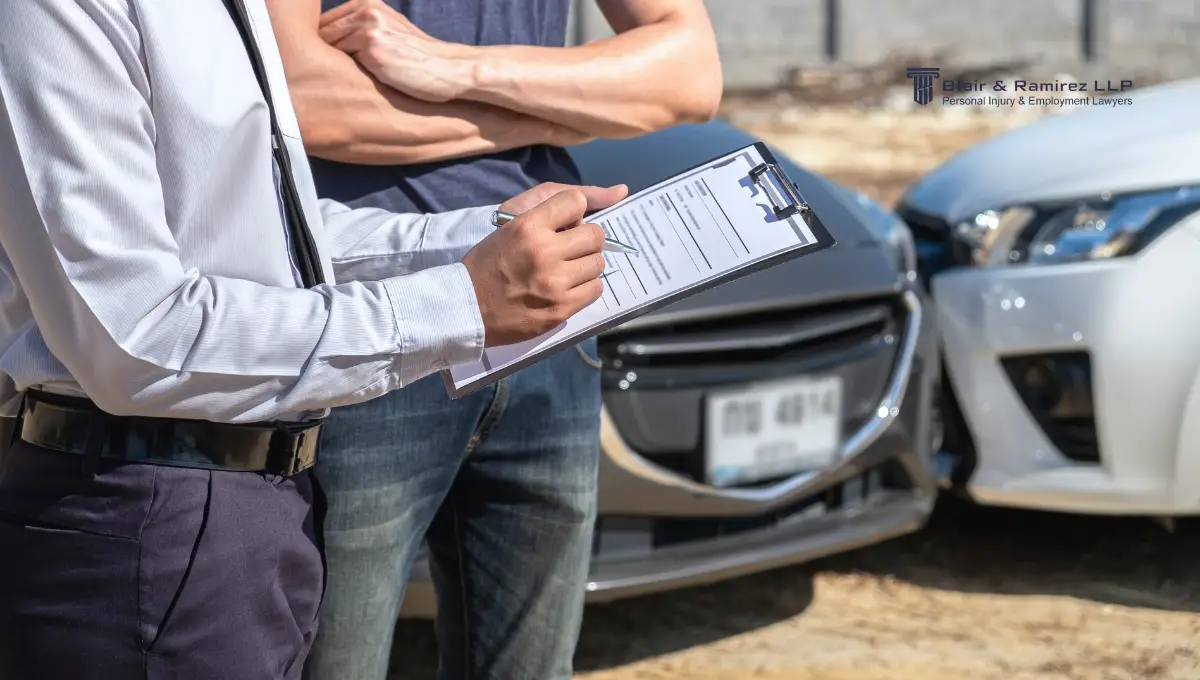
Legal and Leasing Options After a Total Loss in California
Once your leased vehicle is declared a total loss, your next move depends on the circumstances of the crash, insurance delays, and your lease terms. In California, you may have legal rights to compensation beyond what your insurer offers, especially if another driver was at fault or your lease payoff isn't fully covered. This section explains your post-accident options, including whether you can lease again, sue, or when to call a car accident lawyer.
Can You Lease Another Vehicle Right Away?
Yes, you can lease another car after a total loss, but there are a few hurdles that could delay it:
- If your insurance claim is still pending, the leasing company may not release you from the current lease until the settlement is finalized.
- GAP coverage must fully clear your account balance before you are approved for a new lease; otherwise, you may owe money that affects your credit.
- Credit score impact is unlikely unless you miss payments or your account shows unpaid balances during the claim process.
- Vehicle availability and dealer approval may be limited if your claim is still under review.
In most cases, once the total loss claim is closed and all payments are resolved, you're free to lease again, provided your credit and income qualify.
Can You Sue the At-Fault Driver for Totalling Your Leased Car?
Yes, you can sue the at-fault driver if their negligence caused the total loss of your leased vehicle. In California, you’re entitled to pursue:
- Property damage equal to the vehicle’s actual cash value.
- Loss of use while you wait for a replacement.
- Personal injury damages, if you were hurt in the crash.
Because the vehicle is leased, you don’t own it, but you still have a legal interest in the vehicle as a lessee, and your losses are real. If the insurer refuses to cover your losses fully, or if the other driver was uninsured or underinsured, filing a civil lawsuit may be your best path to compensation.
When Is It Necessary to Hire a Lawyer After a Leased Car Accident?
Hiring a car accident lawyer becomes necessary when the process does not go smoothly or your financial exposure increases. At Blair & Ramirez LLP, we help lease drivers navigate high-stakes situations like:
- The insurance company denies or delays your total loss claim.
- The at-fault driver is uninsured or underinsured.
- You face a credit risk from unpaid lease balances.
- You suffered serious injuries, missed work, or need medical treatment.
- Your leasing company requires additional payments after the GAP and insurance payout.
- You are unsure if GAP coverage applies or whether your lease was written fairly.
We protect your rights, handle insurer negotiations, and help you recover everything you are owed, not just what insurers offer.
Legal and Leasing Options After a Total Loss in California
Totalling a leased vehicle in Los Angeles can impact your credit score and ability to rent again, especially if the claim process leads to payment delays or unresolved balances. How the lease payoff is handled and reported determines your future leasing profile.
Will a Total Loss Show on Your Credit Report?
A total loss may appear on your credit report if there are missed payments, an unpaid lease balance, or the account goes to collections. If the lease is paid off promptly, through insurance and GAP coverage, it typically won’t affect your credit history.
Does It Affect Your Leasing History or Ability to Lease Again?
Yes, it can. Insurers delaying payment or missed final lease obligations may appear as derogatory marks or cause leasing companies to view you as a higher-risk applicant. To improve future approval chances:
- Ensure all final payments are made on time.
- Get written confirmation that the lease is closed.
- Monitor your credit report for errors.
- Work with dealerships that understand insurance delays.
Clear communication and timely resolution protect your financial profile after a total lease loss.
How Do California Insurance Laws Impact Total Loss Claims on Leased Cars?
California’s insurance system has a direct impact on how total loss claims on leased vehicles are handled. Because the state uses an at-fault liability model, your ability to recover damages depends heavily on who is determined responsible. Insurance claim timelines, coverage limits, and legal obligations vary from state to state and often lead to delays or disputes, especially in complex lease arrangements.
How Does California’s At-Fault System Affect Leased Cars?
What Happens If the Other Driver Is Uninsured or Underinsured?
How Do Local Insurers Delay or Reduce Total Loss Payouts in LA?
Los Angeles-based insurers may stall the payout process by disputing the car’s value, requiring additional documentation, or delaying the coordination of GAP insurance. To respond:
- Request a written breakdown of their valuation.
- Submit timely documentation (repair estimates, lease agreement, etc.).
- Involve your leasing company early to accelerate GAP communication.
Delays can cause you to continue making lease payments while waiting; prompt legal help can quickly stop these tactics.
Common Mistakes to Avoid When Totaling a Leased Car
Totaling a leased car can be overwhelming, but many costly errors are entirely preventable. Drivers often make quick assumptions or skip critical steps, which can end up costing them thousands in uncovered fees or claim denials. Below, we break down the most frequent mistakes and how to avoid them before it’s too late.
Not Reviewing the Lease Agreement Before Filing a Claim
Failing to read your lease agreement can lead to serious financial missteps. Most contracts contain clauses about early termination, insurance responsibilities, and post-accident obligations. Without a full review, you may overlook language that limits what your insurer will pay or triggers additional penalties. Always examine each clause, especially those covering total loss scenarios, before filing your claim.
Assuming Insurance Covers Everything
One of the most common myths is that insurance will fully cover a totaled lease. The truth is: standard policies only pay the vehicle’s actual cash value (ACV), not the full lease payoff. That leaves gaps for you to cover, including early termination fees, outstanding monthly payments, or tax and title costs, unless you have GAP coverage. Always compare your policy against your lease terms.
Failing to Notify the Leasing Company Promptly
Delaying notification to your leasing company can result in late fees, delay your claim process, or violate the terms of your lease agreement. Most leasing contracts require you to report any major damage or total loss to the leasing company immediately. Contact them as soon as possible, ideally within 24-48 hours, to initiate the title release and payoff procedures.
Believing Insurance Covers Every Lease Cost
Even with GAP insurance, some lease-related costs may not be reimbursed. These typically include:
- Early termination penalties.
- Unpaid registration fees.
- Excess wear-and-tear charges.
- Remaining monthly lease payments during the claim delay.
Remember, GAP insurance only covers the financial difference between ACV and lease payoff; it does not eliminate all obligations. Review the fine print and consult a lawyer if anything seems unclear.
Schedule a Free Consultation With a Los Angeles Lease Accident Lawyer
Totaling a leased car in Los Angeles can be overwhelming. At Blair & Ramirez LLP, we help you understand your rights, deal with insurers, and protect your finances. Your consultation is free, and there’s no obligation.
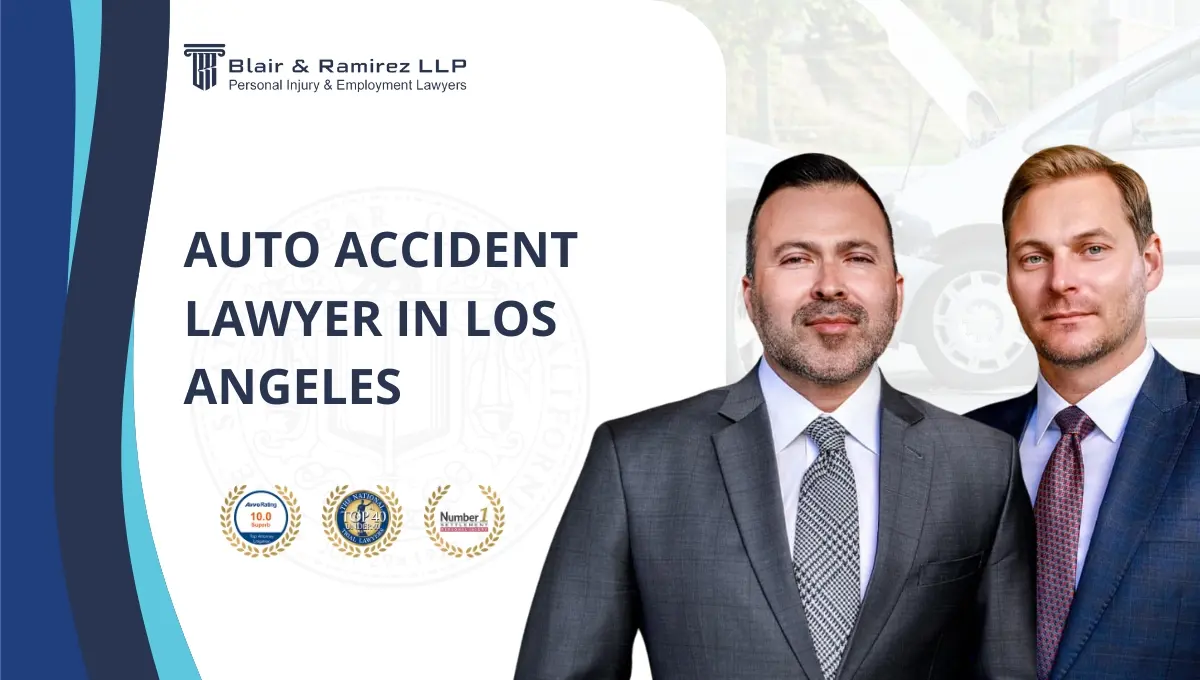
Get help with:
- Lease and insurance review.
- GAP coverage issues.
- Insurer delays or disputes.
Email: contactus@blairramirez.com.
Let us handle the legal side, so you can focus on recovery.
Tell Us What Happened - We’re Ready to Help


